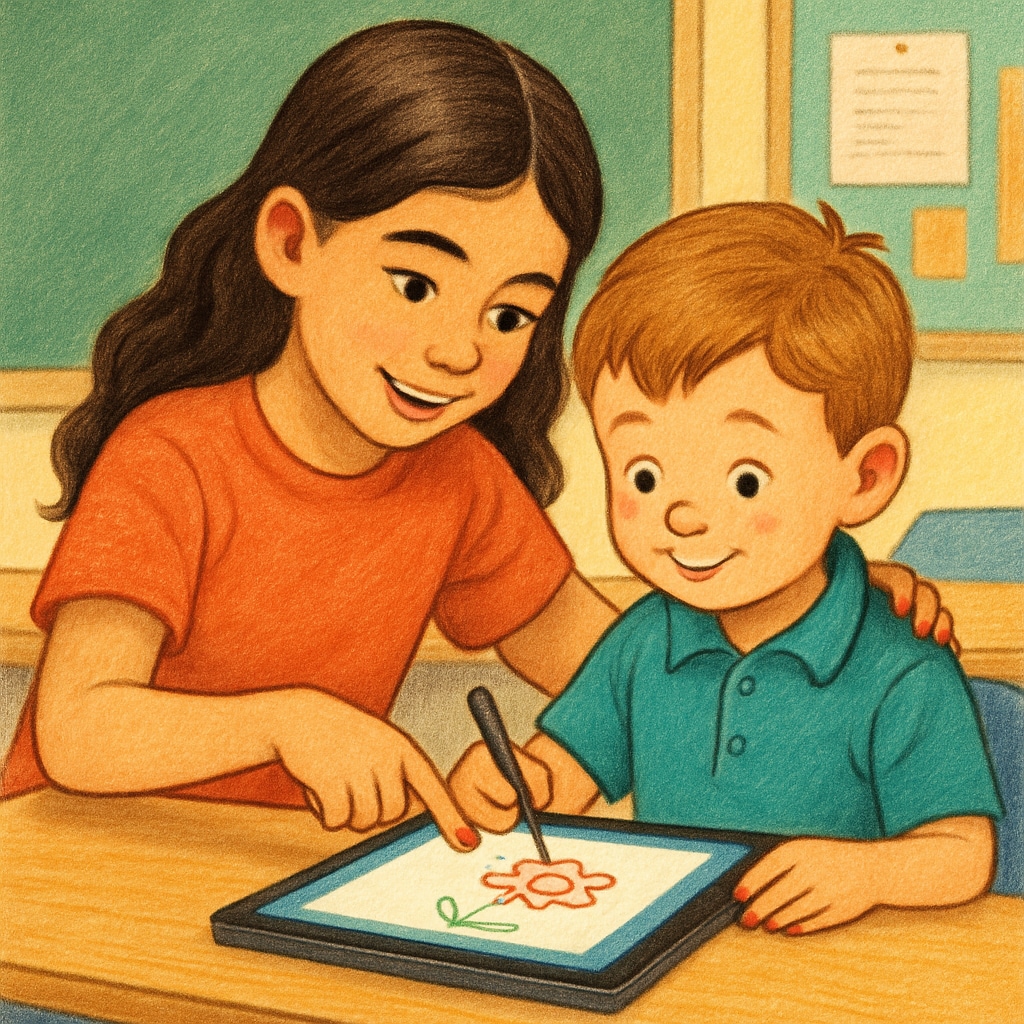Cross-age learning programs, such as those pairing kindergarten students with fourth graders, offer a unique opportunity to nurture diverse skills. These partnerships promote cognitive development, social interaction, and a sense of responsibility among participants. Structured computer activities and creative interactive projects can serve as powerful tools to bridge the age gap and encourage mutual growth.

Structured Computer Activities: Building Essential Skills
Integrating technology into cross-age learning creates opportunities for both groups to engage in meaningful collaboration. Fourth-grade students, often more proficient in computer usage, can guide kindergarteners through age-appropriate activities. This mentorship fosters leadership skills in older students while introducing younger ones to foundational computer skills.
Here are some structured computer activities suitable for these partnerships:
- Interactive Coding Games: Platforms like Scratch Junior allow kindergarteners to learn basic coding with guidance from their fourth-grade partners. This teaches problem-solving and logical thinking.
- Digital Art Creation: Applications such as KidPix enable students to collaborate on artistic projects, combining creativity with digital literacy.
- Educational Games: Websites like ABCmouse or Khan Academy Kids offer games that both age groups can enjoy together, enhancing reading, math, and critical thinking skills.
By working together on these activities, both kindergarteners and fourth graders benefit from shared learning experiences that foster curiosity and teamwork.

Creative Interactive Projects: Encouraging Collaboration
In addition to computer-based tasks, creative projects provide hands-on opportunities for cross-age engagement. These activities allow students to explore their imaginations while strengthening their bonds as partners. Here are some examples:
- Storytelling and Bookmaking: Fourth graders can help kindergarteners craft their own illustrated stories. This enhances literacy and artistic expression.
- STEM Building Challenges: Activities like constructing simple towers with blocks or designing paper airplanes encourage teamwork and problem-solving.
- Gardening Projects: Pairing students to plant seeds or care for a garden teaches responsibility and environmental awareness.
These creative projects provide a balanced approach to learning, emphasizing both academic and social skill development in an engaging format.
Readability guidance: To ensure optimal readability, use short paragraphs and lists to summarize key points. Incorporate transitions such as “however,” “therefore,” and “for example” to maintain flow. Limit passive voice and lengthy sentences for clarity.
Benefits of Cross-Age Learning Partnerships
Cross-age learning programs offer numerous advantages. Kindergarten students gain confidence, improve their communication skills, and develop early academic foundations. Meanwhile, fourth graders refine their leadership abilities, empathy, and problem-solving skills by mentoring their younger peers. As a result, both groups grow academically, socially, and emotionally.
Structured activities and creative projects ensure these partnerships remain engaging and effective. Programs combining computer-based tasks with hands-on, collaborative efforts produce well-rounded experiences that benefit all participants.
For further information on cross-age learning, visit Peer Learning on Wikipedia or explore Early Childhood Education on Britannica.
As schools continue to innovate, cross-age partnerships remain a valuable avenue for fostering growth, collaboration, and lifelong learning skills in children. Harnessing the power of structured computer activities and creative projects will ensure these programs thrive.


